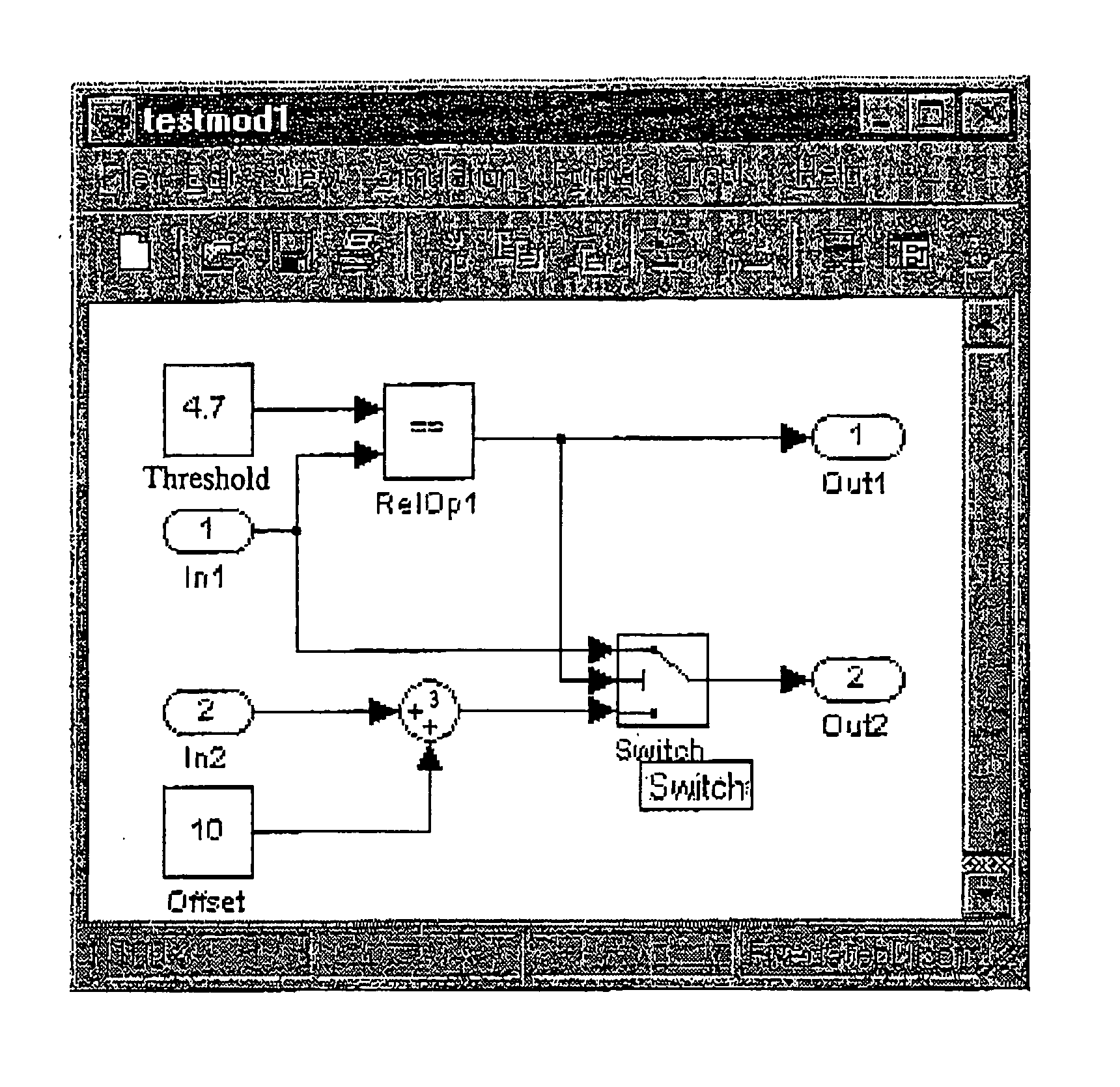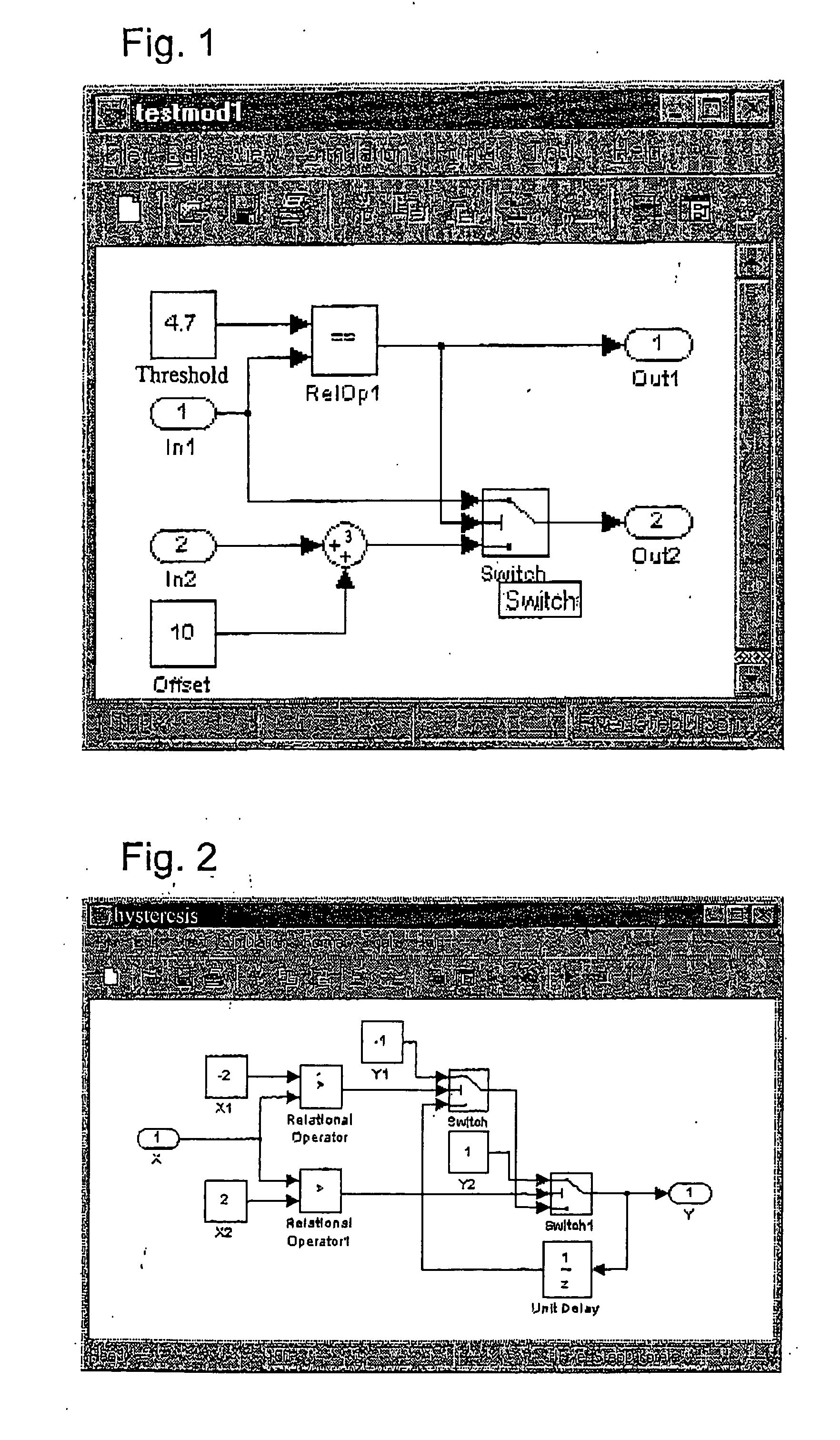Method for the creation of sequences for testing software
- Summary
- Abstract
- Description
- Claims
- Application Information
AI Technical Summary
Benefits of technology
Problems solved by technology
Method used
Image
Examples
Embodiment Construction
[0030] Testing of software created from data flow models takes place by means of a data processing device and executable test case generator software. By means of the test case generator software, a test plan, which is made up of individual test cases, is generated for the software to be tested. The automatic, model-based test case generation proceeds from the assumption that the behavior of each model block is completely known. Based on this assumption, the output value of a block can be calculated if the input values are known. For status-dependent block types, in order to calculate the output values, partial or complete knowledge of the previous progression of the input values is necessary, in addition, depending on the block type. This requirement relates, for example, to delay elements, integrators, or the like.
[0031] According to the invention, test-relevant algorithms in the form of a test case algorithm, a pass-through algorithm, a backward follow-up algorithm, and a forwar...
PUM
 Login to View More
Login to View More Abstract
Description
Claims
Application Information
 Login to View More
Login to View More - R&D
- Intellectual Property
- Life Sciences
- Materials
- Tech Scout
- Unparalleled Data Quality
- Higher Quality Content
- 60% Fewer Hallucinations
Browse by: Latest US Patents, China's latest patents, Technical Efficacy Thesaurus, Application Domain, Technology Topic, Popular Technical Reports.
© 2025 PatSnap. All rights reserved.Legal|Privacy policy|Modern Slavery Act Transparency Statement|Sitemap|About US| Contact US: help@patsnap.com


